"A sculptor fascinated by the life that flows around us." This is how one of Europe’s leading taxidermists describes himself, working with museums and artists around the world, with his animals brought to life one by one so they can be admired forever. He is Gianluca Salvadori, whose 30-year career began by chance, from his workshop in Capannoli he founded a company, Naturaliter (together with his brother Alessio and partner Catia Morucci), contacted by people all over the world to ask them to make animals treated with this practice. And from the workshop they also went on to set up a Zoological Museum, which is located in the premises of Villa Baciocchi in Capannoli to contain and exhibit all the specimens that over the years they have been able to make and include in this natural history educational path. Here you will be able to admire their skill, sifting through each animal species placed in the diorama cases with a reconstruction of their natural habitat. Taxidermy is the method of preserving animal skins and treating them and then applying them to models of the corresponding animal, giving it the expression and likeness of a living specimen. The interview is by Andrea Laratta.
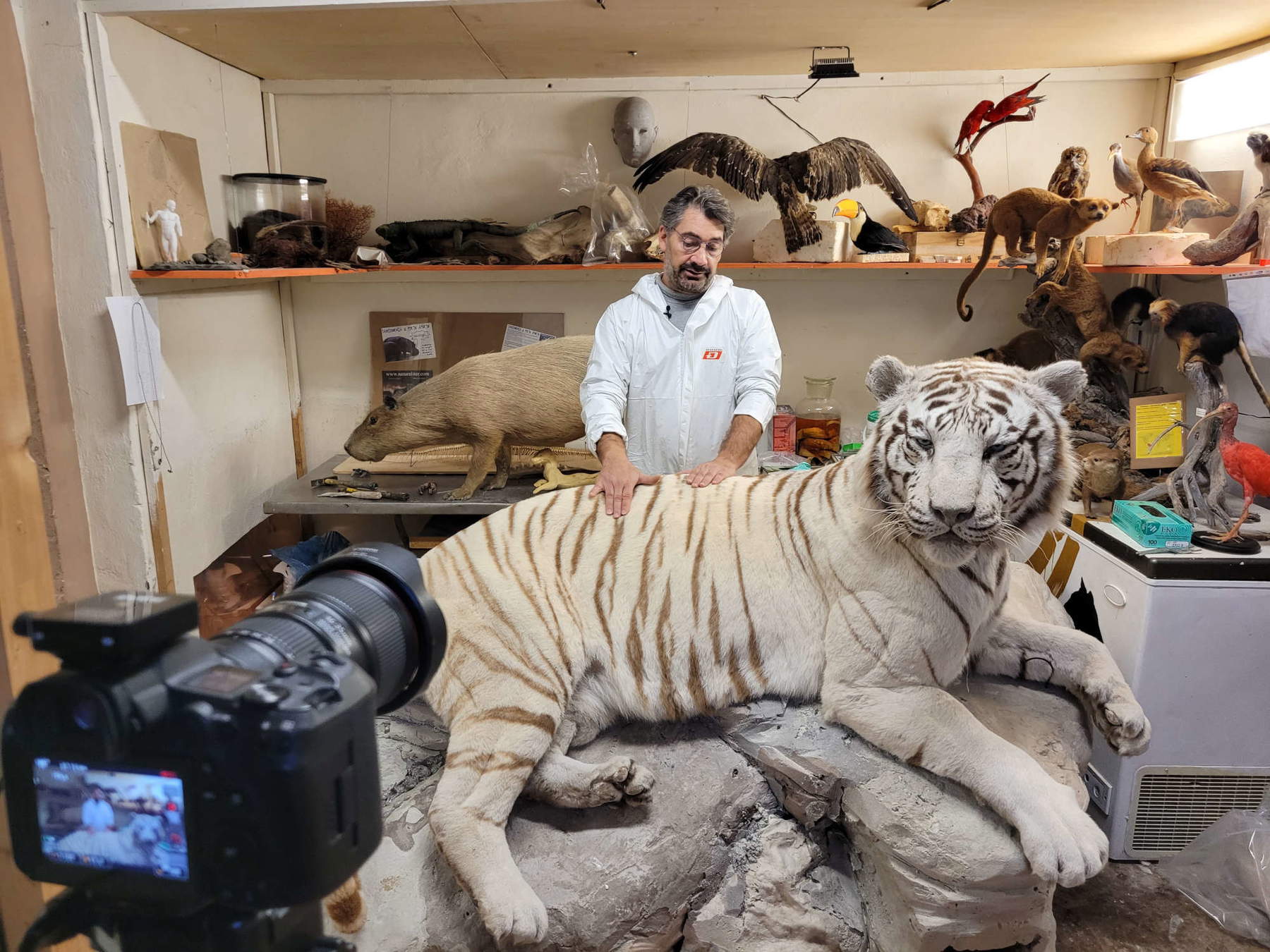
AL. How did you get started as a taxidermist?
GS. It was the answer to the passion I had: I always liked animals, much more than people, I always found them wonderful. One day by chance, in San Remo with my father and my family, I found a little yellow bird, beautiful, dead in the street.... it looked perfect and yet it was dead. It was the first time I had ever collected anything on the street, and I couldn’t help but go to the pharmacy and ask if there was anything to stop this beauty from disappearing, as if to stop the decay of time. But they gave me a material that was not suitable naturally. From that moment I started (self-taught, there is no school), and I haven’t stopped since. It’s very precise work, difficult, in the sense that schools are not there and the craftsmen who were doing this work until now are quite closed: for fear of losing their work they don’t teach anyone ... as if it were a secret matter, almost a magic, no one has the opportunity to understand well how it works, as if we were alchemists [Laughs].
What skills do you need to do your job? It is undoubtedly complex and must hold together creativity with intedisciplinary knowledge.
I am basically a sculptor; I went to art school. It takes perseverance, determination and love of nature. And in my opinion a taxidermist must necessarily be a sculptor, because taxidermy is nothing but the reconstruction of the animal specimen according to its real features. The larger the specimen, the more the sculptor’s talents show. When working on a large animal (such as a tiger, a horse, an elephant), one spends months creating a sculpture that reproduces the specimen in the exact position in one’s head. Meanwhile, the skin is sent to the tanner, whether it is with feathers or scales or hair, and then it is glued onto the sculpture. The bigger and more difficult it is, the more mistakes can be seen.
And on the inside?
The skeleton goes another way, which is often to a university, research center, or exhibition facilities. Inside is a more or less exact reconstruction of the animal’s form. We are artisans, we cut a piece of polyurethane or clay and create a model. If it’s solid polyurethane we sculpt it, if it’s clay we model it, and then we make a cast of what we’ve built, of our model. And on this sculpture the skin is glued. Our model then has to reproduce the anatomy of the animal. And they are all different, each one individually by hand, one piece by hand.
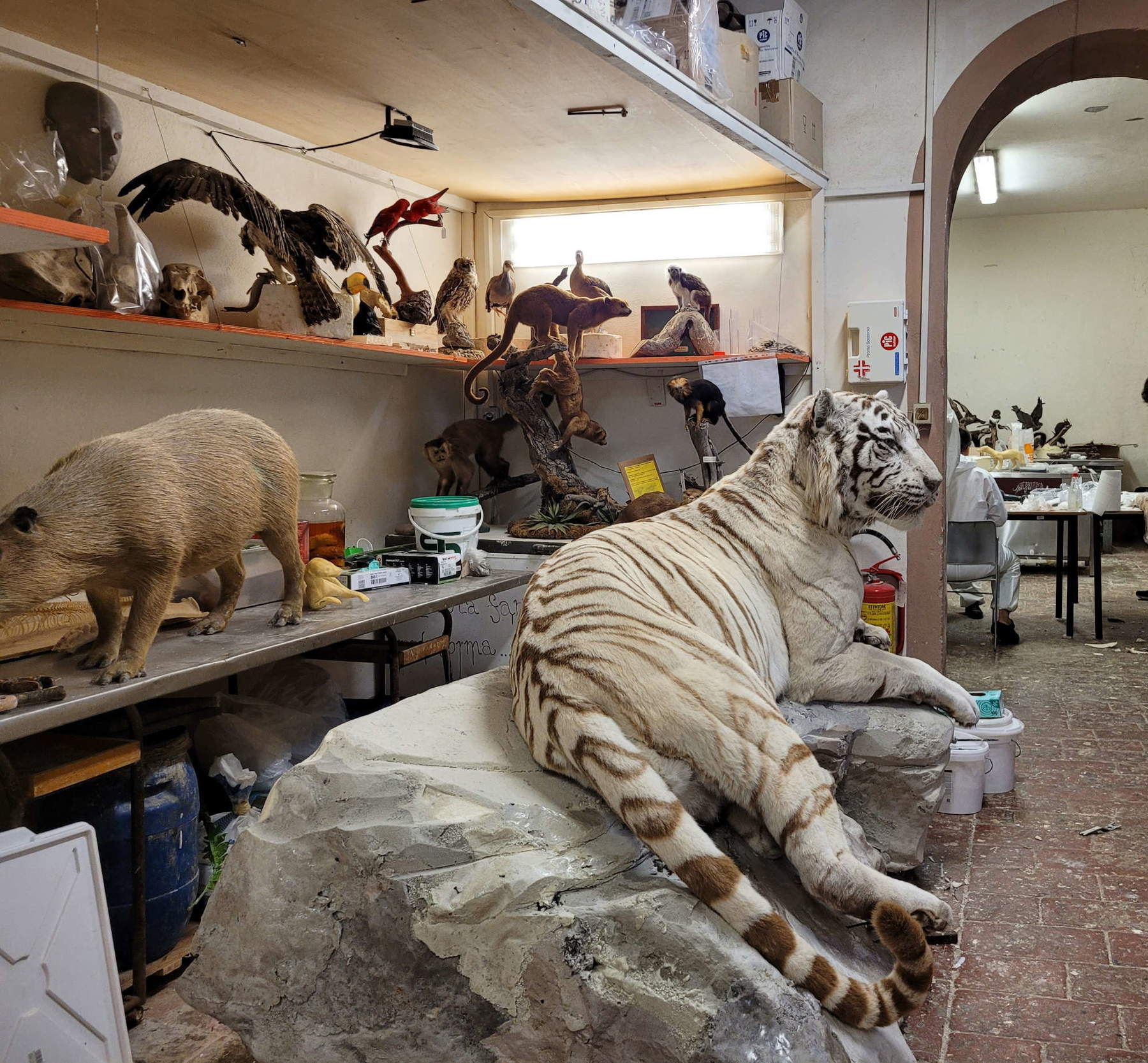
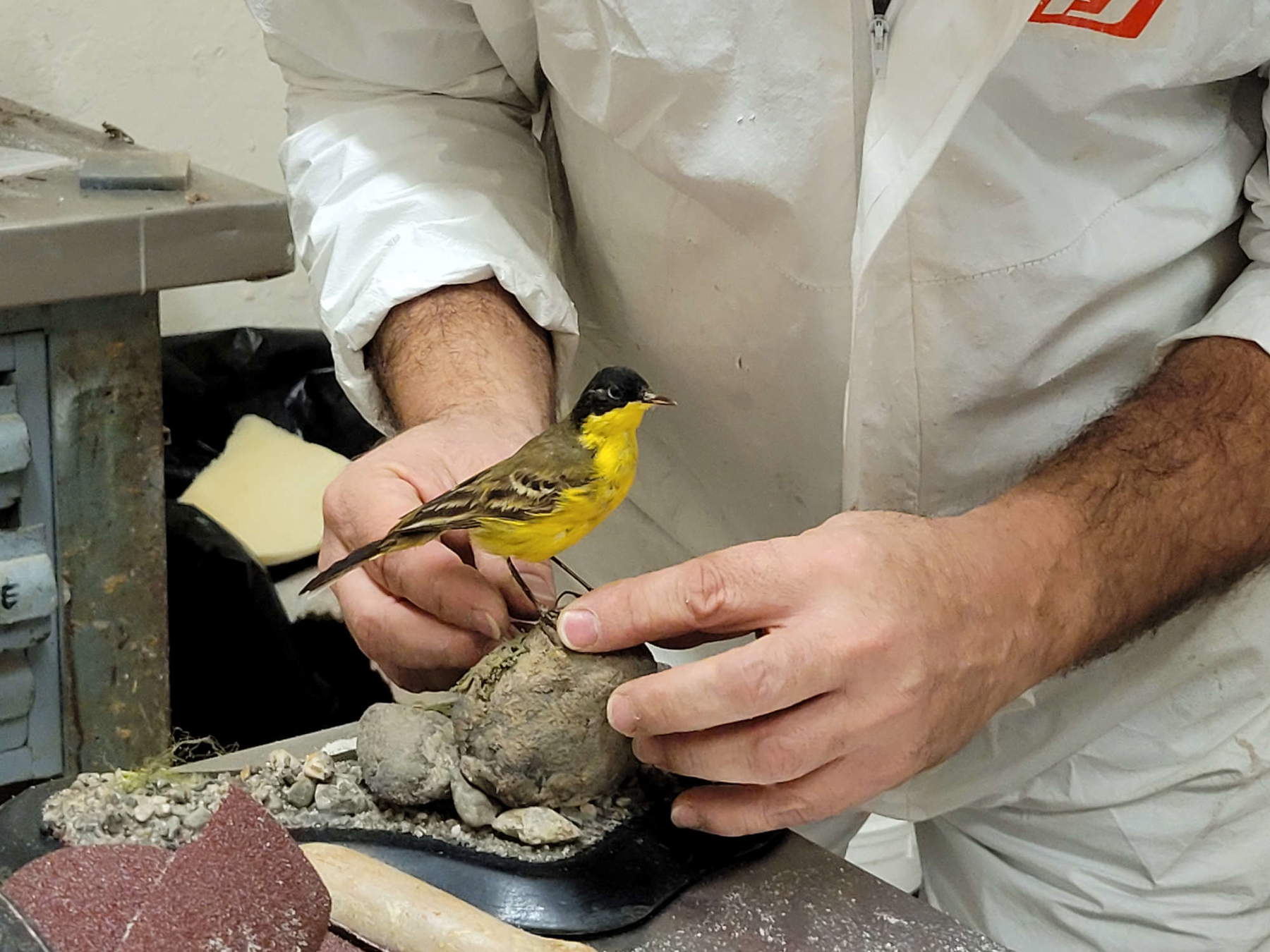 Naturaliter’s
Naturaliter’s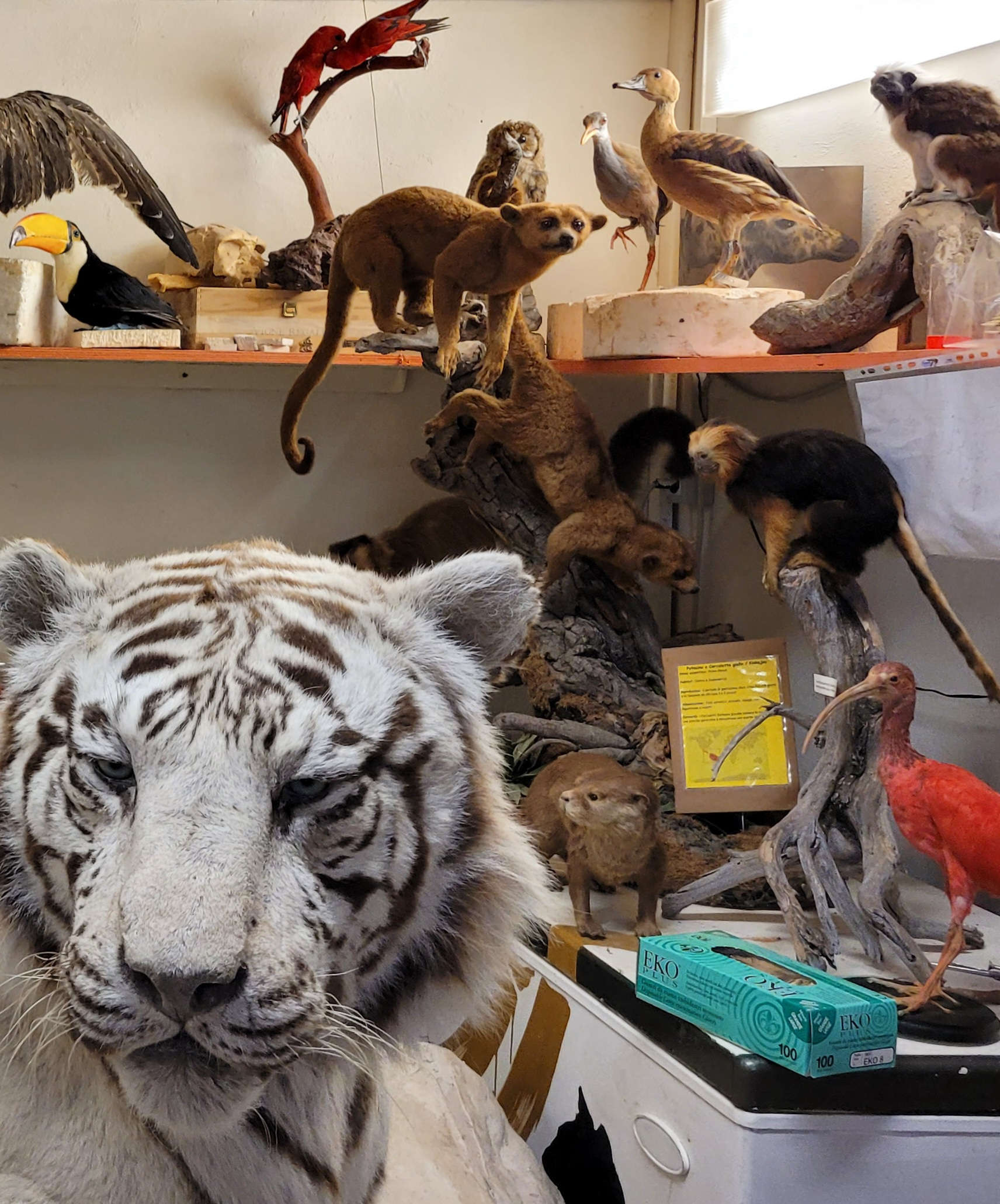 Naturaliter’s workshop in
Naturaliter’s workshop in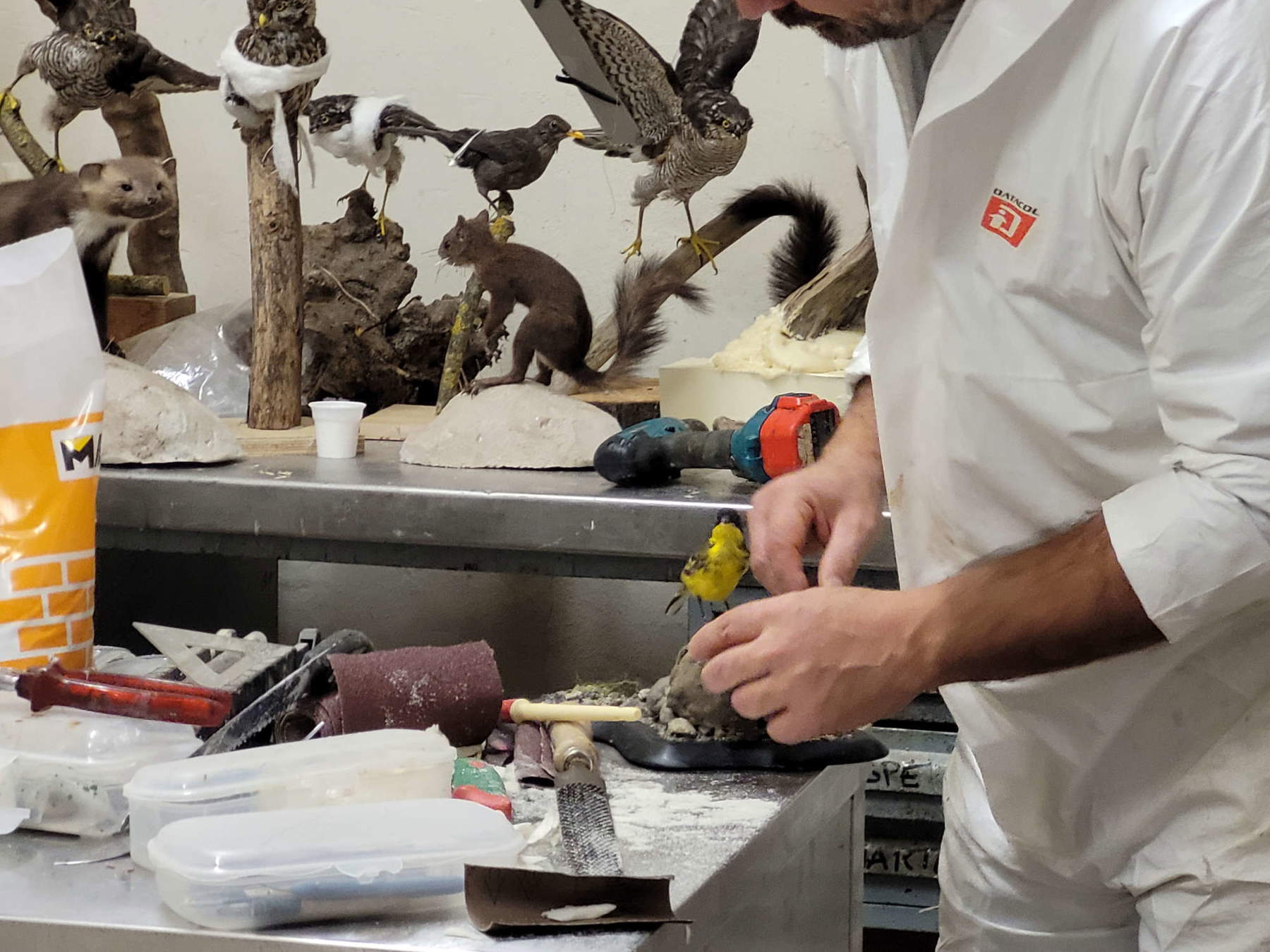 Naturaliter’s workshop in
Naturaliter’s workshop inHis abilities to make the body with the folds of muscles and features identical to a living animal are highly appreciated in Italy and abroad. How does he manage to create the right shapes for each animal?
At the base is observation: I like animals alive, so I watch them with pleasure as they move. And when they die and I have them in my hands, in my mind I imagine them as I would like to see them alive. Normally I make them with a relaxed attitude, it is rare that I make them with aggressive features, unless they are intended for themed exhibitions. And since they are unique pieces, all handmade, the characteristics of the person working on them are poured onto each specimen. I realized that most of the animals I make are right-facing, unknowingly but I make them that way. The sculpture is really an artistic product that comes from nothing, so it is a pure construction, even if it has to follow the shapes of the dead animal.
His work is also in great demand by major Science and Ethnological Museums in cities all over the world. And you have also worked with many artists, can you give us some names?
I would prefer not to answer with names for confidentiality reasons, but suffice it to say that there are not many of us in the world who do taxidermy, so when you have seen some animal in some museum or art installation, it is likely to be our work.
Besides museums and the art world do you also work for the hunting industry?
Absolutely not! We are really far from that world: we collect dead animals that we also find along the roads to give them life, and we keep them in our workshop and exhibition center in Capannoli waiting for some museum to ask us for them. And we do this because we are sorry to leave them as garbage. In our facility we have an exhibition space with all the species of the world: it is the zoos themselves or some circuses that contact us when some of their animals die so that we can treat them and display them. Recently we also prepared a dead elephant at the Pistoia Zoo, which then became part of the Natural History Museum in Calci.
What is the first approach when you have an animal in your hands?
The first thing I feel is wonder, the wonder of how incredible and perfect Nature is. Then comes the sorrow for the dead animal.
Your relationship with nature and animals?
I live in the middle of the countryside surrounded by animals, and I am very comfortable there.
As one of the few in Europe who can do this craft, how do you plan to pass on this craft?
I think that human evolution has come so far precisely because it has been able to pass on the things that have been made, otherwise we would be losing one of our characteristics that identifies us as human beings. We opened a taxidermy school recognized by the Tuscany Region, and we had many more students than I thought would come. I always had the fear that our work would be seen as close to hunting, and therefore frowned upon, but that is not the case. I doubted that I had attraction to kids and instead I had unexpected feedback, and I didn’t even have any criticism on social media. Right now we have 200 kids on the waiting list to get in, but we more than 5-10 people a year we can’t take. Unfortunately, all this demand we can’t handle because we’re overworked, so we focus on small numbers each year because it’s a hard job to learn.
What characteristics are needed?
A basic knowledge of animals, being a little bit of a sculptor, a little bit of a painter, a little bit of a chemist... these guys come from different backgrounds: some from art school, some from the faculty of natural sciences or biology, we even had a doctor, retired.
Are there differences in approach between those who engage in this practice for art and those for science?
The differences are there, but they both start from wonder, the wonder of how is it possible that there are such perfect animals that you never stop discovering and understanding.
How would you define yourself?
A sculptor fascinated by the life that flows around us.
Warning: the translation into English of the original Italian article was created using automatic tools. We undertake to review all articles, but we do not guarantee the total absence of inaccuracies in the translation due to the program. You can find the original by clicking on the ITA button. If you find any mistake,please contact us.